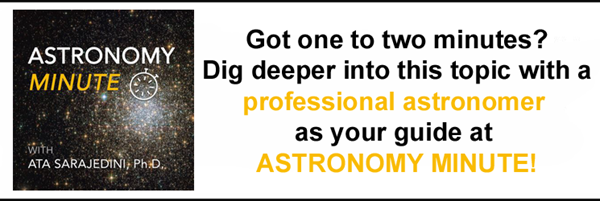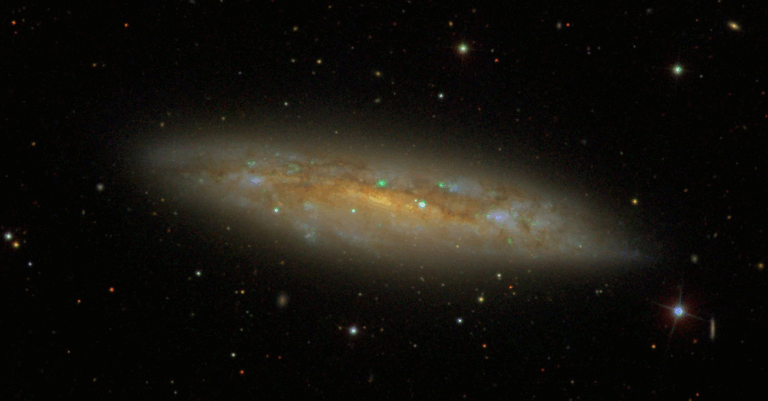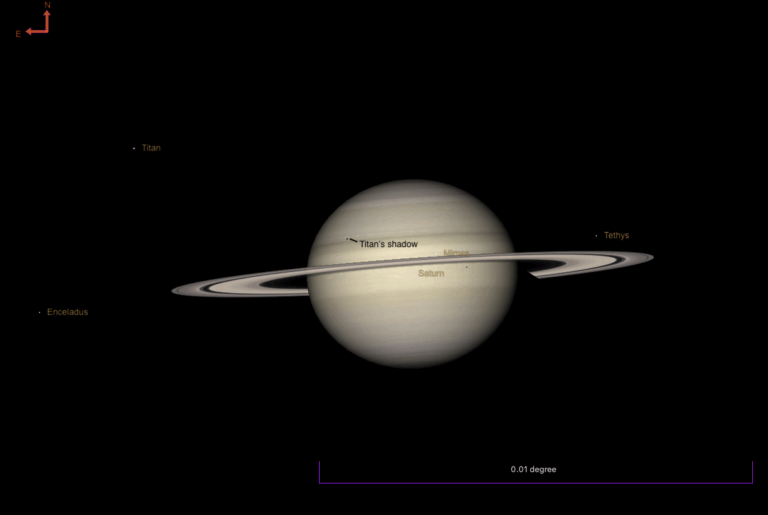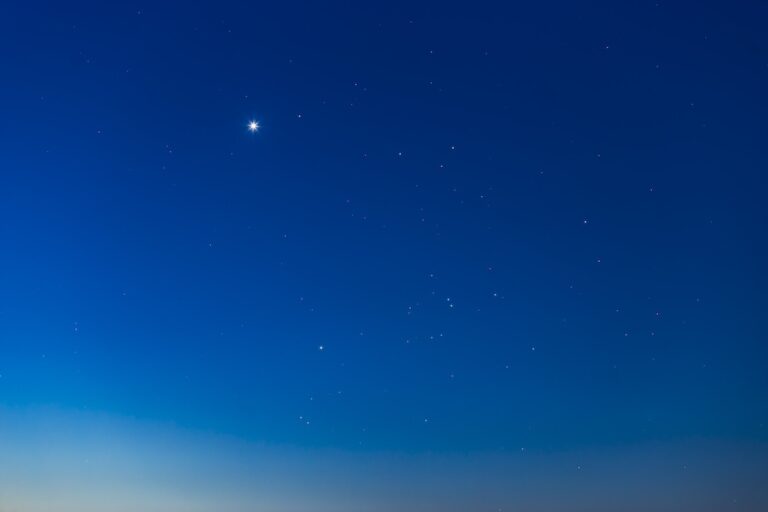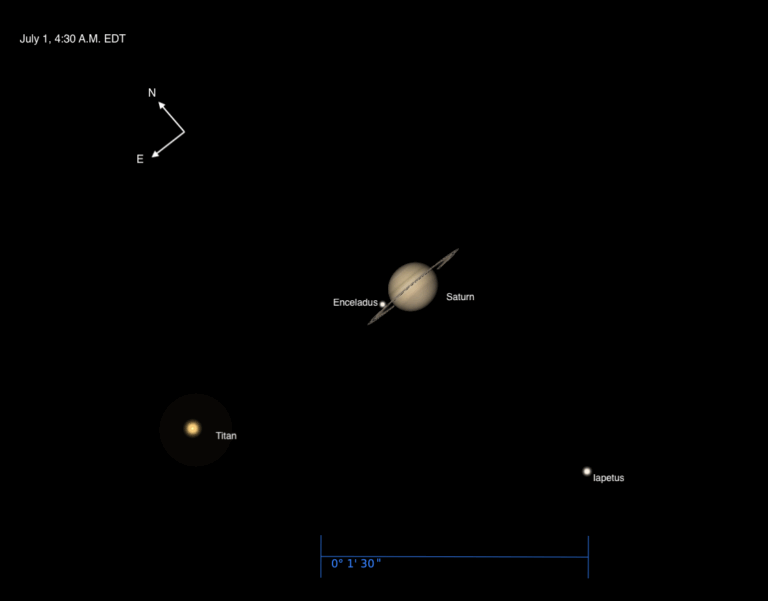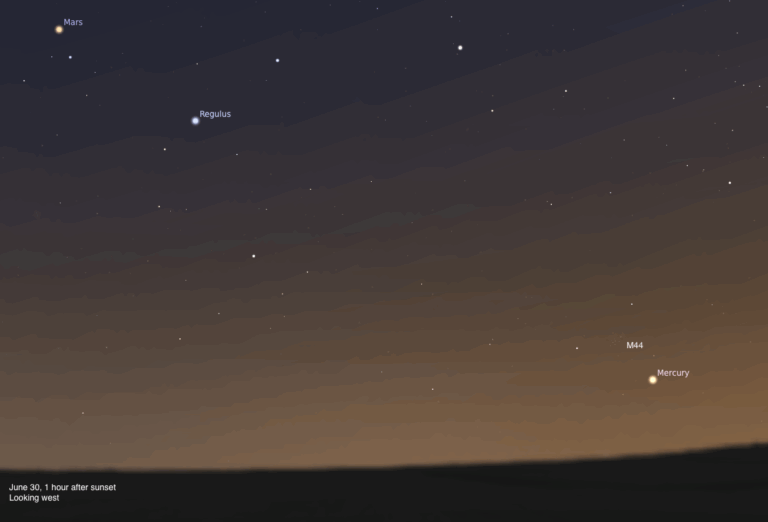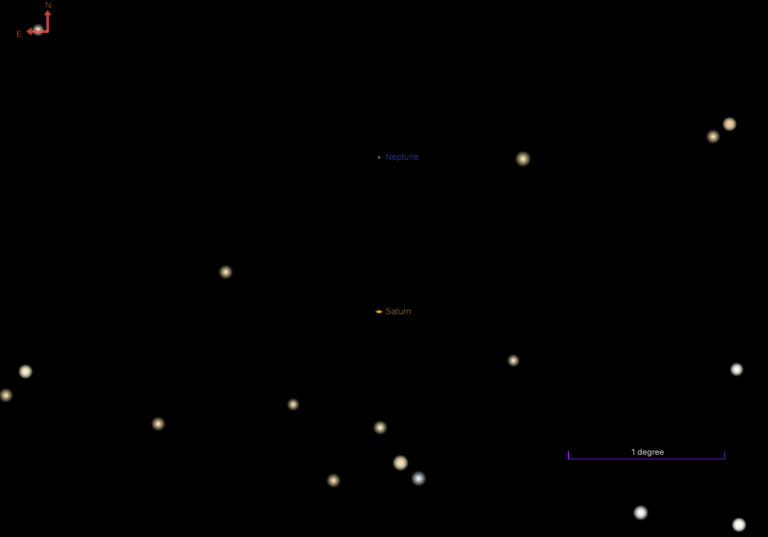Observers who are ready at dusk can catch Neptune, the farthest planet from the Sun, before it sets in the west a little less than three hours after sunset. It’s located in the northeastern corner of Aquarius, now 2° northeast of Phi (φ) Aquarii. The 4th-magnitude star is still a great jumping-off point to find the planet, glowing around magnitude 8, with binoculars or a small telescope. Opt to find it earlier rather than later, as the turbulent air near the horizon will distort the image as it sets.
At its great distance from our planet — almost 31 times the distance of Earth from the Sun — Neptune’s disk spans a tiny 2″ (it may even look blue to sharp-eyed observers). In reality, the ice giant stretches roughly four times our planet’s diameter.
Sunrise*: 7:04 A.M.
Sunset: 5:25 P.M.
Moonrise: 1:26 A.M.
Moonset: 11:43 A.M.
Moon Phase: Waning crescent (39%)
*Times for sunrise, sunset, moonrise, and moonset are given in local time from 40° N 90° W. The Moon’s illumination is given at 12 P.M. local time from the same location.
Venus and Saturn rise less than a Moon’s-width apart this morning, but they make a challenging pair in the light of dawn. They rise in Capricornus on the eastern horizon a scant 30 minutes before the Sun. Venus is a bright morning star at magnitude –3.9, showing a nearly full disk (98 percent lit). The ringed planet is a much dimmer magnitude 0.7. Its rings stretch nearly 35″.
To avoid accidentally damaging your eyesight, set an alarm for several minutes before sunrise and put the binoculars away when it goes off. Never scan the skies with binoculars or a telescope after sunrise, because even an accidental glimpse of our star could cause permanent damage to your eyes.
Sunrise: 7:03 A.M.
Sunset: 5:26 P.M.
Moonrise: 2:38 A.M.
Moonset: 12:24 P.M.
Moon Phase: Waning crescent (28%)
Tonight, turn your gaze north to find the constellation Camelopardalis, sitting above Polaris after dark. Nestled within its boundaries is the spiral galaxy NGC 2403, also classified as Caldwell 7 and one of the sky’s brightest galaxies at magnitude 8.5.
However, the galaxy is large — nearly 30′ by 13′, or almost 50 percent the size of the Full Moon — which spreads its light out and makes it appear dimmer (i.e., low surface brightness). NGC 2403 appears about twice as long as it is wide; although you’ll need a larger amateur instrument (12 inches or more) to make out its arms, even a smaller scope will show bright stars tracing out the harder-to-see gas and dust of its spiral structure.
The easiest way to find the galaxy is to locate magnitude 3.4 Muscida, the nose of Ursa Major the Great Bear. NGC 2403 is a little less than 8° northwest of the star, over the border in Camelopardalis.
Sunrise: 7:02 A.M.
Sunset: 5:27 P.M.
Moonrise: 3:49 A.M.
Moonset: 1:13 P.M.
Moon Phase: Waning crescent (19%)
Monday, February 8
Mercury is in inferior conjunction at 9 A.M. EST, meaning it lies directly between Earth and the Sun. It will begin to appear in the predawn sky over the next few days.
Comet 141P/Machholz 2, currently right near the border between Taurus and Eridanus, has been observed at around magnitude 10.5, although it is fading. Tonight, it lies at a distance of 0.62 astronomical units, or 0.62 times the average Earth-Sun distance. Observers with larger telescopes (8 inches or more) should be able to spot it about 1.6° south-southeast of magnitude 4.3 10 Tauri.
Discovered in 1994, 141P has a period of 5.3 years and is classified as a Jupiter-family comet. When it was discovered, astronomers noted it had several separate fragments, labeled A through G. When telescopes picked it up on its latest return in August 2020, they saw not only the main comet (A) return, but also components D and H.
Sunrise: 7:01 A.M.
Sunset: 5:28 P.M.
Moonrise: 4:53 A.M.
Moonset: 2:10 P.M.
Moon Phase: Waning crescent (11%)
Tuesday, February 9
The United Arab Emirates’ Hope probe is slated to enter Mars orbit this morning around 10:30 A.M. EST. Launched from Japan last July, Hope aims to study Mars’ climate and atmosphere.
The Red Planet is already high in the southern sky at sunset, glowing at magnitude 0.6 amid the stars of Aries the Ram. Despite this favorable sky position, it’s currently 1.2 million miles (1.9 million kilometers) from Earth, a little more than the average Earth-Sun distance. Its disk spans a relatively small 7″, so details are difficult to make out. That challenge is heightened by the fact that the relatively featureless martian deserts are currently on display overnight. Fortunately, that will change later in the month, as the dark Sinus Lacus and Sinus Meridiani rotate into view.
10.5° southwest of Mars is Uranus. At magnitude 5.8 it’s an easy binocular target, especially with no bright Moon to wash out the sky. Its 4″-wide disk will likely appear as a blue-gray spot with a “flatter” appearance than any nearby background stars.
Asteroid 2 Pallas is in conjunction with the Sun at 3 P.M. EST.
Sunrise: 7:00 A.M.
Sunset: 5:29 P.M.
Moonrise: 5:50 A.M.
Moonset: 3:13 P.M.
Moon Phase: Waning crescent (5%)
A barely 2-percent-lit Moon passes 3° south of Saturn at 6 A.M. EST. Dedicated morning observers with a clear view of the east-southeastern horizon may be able to catch our satellite rising just 20 minutes or so before the Sun. At that time, Saturn is only 3° high. Also visible are Venus, Jupiter, and Mercury, but all are lower than Saturn and increasingly close to the Sun. As always, take care with your predawn observing and stop using binoculars or your telescope at least several minutes before sunrise.
The Moon passes 3° south of Venus later today at 3 P.M. EST.
Tonight, asteroids 18 Melpomene (magnitude 9.5) and 60 Echo (magnitude 10) — still traveling together through Cancer — pass on either side of the orange star FX Cancri (magnitude 6.7). Nearby is the open cluster M67, one of the oldest-known open clusters at a little more than 3 billion years old. With a visual magnitude of 6.1 and an apparent size of 30′, M67 is an excellent target for binoculars or any size telescope.
Also close by in Cancer is M44, better known as the Beehive Cluster. This naked-eye object shines at magnitude 3.7 and spans about 1.5°; in reality, it stretches about 15 light-years from side to side and sits less than 600 light-years away. To the naked eye, M44 may look like a gauzy glow, but binoculars or a telescope will reveal its members: some 1,000 glittering young suns.
Sunrise: 6:59 A.M.
Sunset: 5:31 P.M.
Moonrise: 6:37 A.M.
Moonset: 4:20 P.M.
Moon Phase: Waning crescent (1%)
Thursday, February 11
Venus passes 0.4° south of Jupiter at 7 A.M. EST. You can try spotting the close pair in binoculars just before sunrise in the eastern sky, with magnitude –3.9 Venus positioned to the lower right of magnitude –2 Jupiter.
A little less than 6° northeast of Jupiter is Mercury, showing just a sliver of its surface as a 3-percent-lit crescent. Look 6° west of the solar system’s largest planet to find Saturn; the ringed planet is higher above the horizon, but a much dimmer magnitude 0.7.
Note that these twilight planets are all challenging targets with the quickly rising Sun. As with other early-morning events this week, take care to stop observing with optics several minutes before sunrise.
New Moon occurs today at 2:06 P.M. EST.
Sunrise: 6:57 A.M.
Sunset: 5:32 P.M.
Moonrise: 7:17 A.M.
Moonset: 5:28 P.M.
Moon Phase: New
Friday, February 12
Although the Orion Nebula (M42) is bright enough to see even with the Moon in the sky, nothing beats viewing this stunning deep-sky object on a clear, moonless night.
By the time full darkness falls, Orion the Hunter is already high in the southeast. Find the familiar three stars of his belt and look to the lower right (south) of the bottom star, Alnitak (Zeta [ζ] Orionis), for a hazy patch of light. That’s the nebula, so large and bright that most can easily make it out with the naked eye.
Turn binoculars or a scope on this target, though, and it really explodes. Buried in the center of the glowing nebula is the Trapezium Cluster — an association of young, hot, bright stars, whose winds are literally blasting away the gas and dust from around them. Can you see the dark cavity they’ve already carved in the surrounding glow?
You’ll want to spend plenty of time exploring the nebula, which often appears greenish to the human eye. Look for dark lanes where dust blocks the nebula’s light and trace the irregular borders of the cloud as its glow diffuses into the dark sky around it. Astrophotographers find this a favorite — and easy — target, so it’s a great way to sharpen your skills before moving on to more challenging options.
Sunrise: 6:56 A.M.
Sunset: 5:33 P.M.
Moonrise: 7:50 A.M.
Moonset: 6:33 P.M.
Moon Phase: Waxing crescent (1%)


